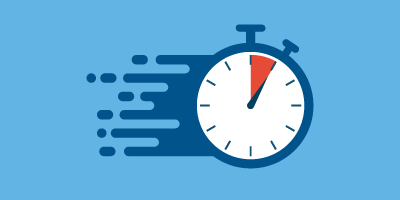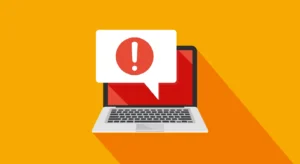Accurate, efficient invoice processing is critical to maintaining healthy cash flow and strong vendor relationships. As organizations strive to streamline their accounts payable processes, they often turn to automation and best practices to minimize errors and ensure accuracy. One widely recognized method is the 3-way matching process, which compares and validates the matching data on three documents before the invoice is cleared to go through the payment process:
- Purchase order
- Invoice from the vendor
- Receipt of goods
3-way matching prevents fraud, eliminates discrepancies, and reduces the risk of overpayments. By cross-referencing these three key documents, companies can identify and address inconsistencies before they escalate into larger issues. However, while 3-way matching offers significant benefits, it’s not always a one-size-fits-all solution. Different organizations have unique needs and challenges, and a rigid application of 3-way matching can sometimes create more complexity than it solves. Understanding when and how to apply this process – and when alternative approaches might be more effective – is crucial for optimizing invoice management and ensuring that your accounts payable function runs smoothly.
What is 3-Way Matching?
3-way matching is a fundamental process in accounts payable (AP) automation that ensures accuracy and prevents financial discrepancies in an organization’s transactions. It involves comparing three key documents – the purchase order (PO), the goods receipt, and the supplier invoice – to verify that they match before approving payment. This comparison helps ensure that the quantity of goods received matches what was ordered and invoiced and that the pricing is consistent with the agreed-upon terms. If all three documents align, the payment can proceed; if not, discrepancies are flagged for further investigation.
In the broader context of AP automation, 3-way matching is critical in reducing manual errors, preventing overpayment, and protecting against fraud. Automating this process allows organizations to handle large volumes of transactions efficiently, freeing up time for AP teams to focus on more strategic tasks.
While 3-way matching is a robust tool, it’s essential to recognize that other methods are available. Depending on your organization’s needs, you might also consider 2-way or 4-way matching, each offering different levels of verification and control.
Benefits of 3-Way Matching
Implementing 3-way matching as part of your accounts payable process offers a range of significant benefits that can enhance the overall efficiency and accuracy of your financial operations. Here are some of the key advantages:
Reduces Errors
One of the primary benefits of 3-way matching is its ability to reduce errors in invoice processing. By automatically cross-referencing the purchase order, goods receipt, and supplier invoice, this process ensures that only accurate and consistent information is approved for payment, reducing the likelihood of mistakes that can occur with manual data entry, such as duplicate payments or incorrect amounts.
Improves Compliance
3-way matching also plays a vital role in ensuring compliance with internal policies and external regulations. Organizations can maintain a consistent approach to invoice approval by establishing a standardized process for verifying transactions. This helps adhere to internal controls and supports compliance with audit requirements and financial regulations, reducing the risk of penalties and legal issues.
Prevents Overpayments
Overpayments can significantly impact an organization’s bottom line, leading to unnecessary strain on the AP department and potential disputes with suppliers. Three-way matching helps prevent overpayments by ensuring that invoices are only paid when the goods or services received match what was ordered and agreed upon in terms of pricing and quantity. This safeguard minimizes the risk of paying for items not delivered or services not rendered.
Enhances Vendor Relationships
By reducing errors and ensuring timely and accurate payments, 3-way matching can help strengthen relationships with vendors. Suppliers appreciate the reliability of prompt payments that accurately reflect the goods or services provided, which can lead to better terms and a more collaborative partnership.
Supports Fraud Prevention
Fraudulent invoices and unauthorized payments can be a significant risk for any organization. 3-way matching acts as a robust defense mechanism against fraud by requiring that each transaction is verified against multiple documents. This additional layer of scrutiny makes it more difficult for fraudulent activities to go undetected.
By incorporating 3-way matching into your AP process, you will improve the accuracy and efficiency of your invoice processing and build a more secure and compliant financial operation.
Challenges of Traditional 3-Way Matching
While 3-way matching is a powerful tool for ensuring accurate and secure invoice processing, it has challenges – particularly in certain organizational contexts or types of transactions. Here are some common difficulties that companies may encounter when using traditional 3-way matching:
Complexities in Large Organizations
For large organizations dealing with high transaction volumes and a wide array of vendors, the 3-way matching process can become increasingly complex and time-consuming. As the number of purchase orders, receipts, and invoices grows, so does the potential for mismatches and discrepancies, which can overwhelm AP teams. The sheer volume of data to be processed can lead to bottlenecks, delays in payment approvals, and increased administrative burden.
Inefficiency in Service-Based Industries
Traditional 3-way matching is primarily designed for tangible goods, where comparing the purchase order, receipt, and invoice is easy. However, in service-based industries, where deliverables are often intangible or not tied to physical shipments, 3-way matching can fall short. For example, if the goods received were consulting services or software licenses, there may not be a clear “goods receipt” document to verify against, leading to challenges in accurately matching these transactions.
Difficulties with Low-Value, High-Volume Purchases
In scenarios where a company frequently makes low-value, high-volume purchases – such as office supplies or routine maintenance materials – 3-way matching can become inefficient. The effort required to match each small transaction against the corresponding documents may not justify the potential benefits. This can slow down the AP process, creating unnecessary delays for transactions that pose minimal risk to the organization.
Exceptions and Variances
Even in well-structured organizations, variances between purchase orders, receipts, and invoices are common. These exceptions can stem from slight differences in quantities, unit prices, or shipping costs, which are often legitimate but require manual intervention. Handling these exceptions can be labor-intensive, particularly if the organization lacks automated tools to streamline the process.
Lack of Flexibility
Traditional 3-way matching can be rigid, making it difficult to adapt to unique or evolving business needs. For instance, certain industries or contracts may involve complex pricing structures, rebates, or discounts that don’t neatly fit into a standard 3-way matching framework. In such cases, the process can become cumbersome and may lead to errors if the system isn’t flexible enough to accommodate these nuances.
Recognizing these challenges is crucial for organizations looking to optimize their AP processes. While 3-way matching is valuable, it is essential to assess whether it’s the right fit for every transaction type and explore alternative or complementary strategies to address its limitations.
How to Ensure Your Organization’s 3-Way Matching is Efficient
While 3-way matching is a powerful tool for ensuring accuracy in invoice processing, maximizing its efficiency requires strategic implementation and thoughtful customization. Here are some ways organizations can optimize their 3-way matching process to ensure it runs smoothly and effectively:
Incorporate a Value Threshold
Not all transactions carry the same level of risk, so applying 3-way matching uniformly across all invoices can be inefficient, particularly for low-value purchases. By setting a value threshold, organizations can reserve 3-way matching for higher-value transactions that justify the additional scrutiny. A more straightforward 2-way matching process might be sufficient for smaller, routine purchases, allowing your AP team to focus on more critical transactions without getting bogged down by low-risk items.
Set a Discrepancy Threshold
Minor discrepancies between purchase orders, goods receipts, and invoices – such as small price differences due to rounding or minor shipping variations – are common and often don’t pose significant risk. Establishing a discrepancy threshold allows your system to automatically approve invoices that fall within an acceptable variance, reducing the need for manual intervention. This approach streamlines the process by flagging only those transactions that exceed the threshold, enabling quicker approvals and reducing administrative overhead.
Implement Vendor Rating Systems
Not all vendors present the same level of risk. Long-standing, trusted suppliers with a history of accurate deliveries may require a different level of scrutiny than new or less reliable vendors. Organizations can adjust the matching necessary based on the supplier’s performance by implementing a vendor rating system. A less stringent matching process might suffice for highly rated vendors, while new or lower-rated vendors could still undergo the complete 3-way matching process.
Automate the Process
One of the most effective ways to ensure your 3-way matching process is efficient is by automating it. Automation tools can quickly and accurately compare documents, flag discrepancies, and even handle exceptions based on predefined rules. Organizations can significantly reduce manual effort, minimize errors, and accelerate the payment cycle by automating the matching process. Automation also provides real-time visibility into the AP process, making it easier to monitor performance and adjust as needed.
Regularly Review and Optimize Your Process
Even with these strategies in place, continuously reviewing and optimizing your 3-way matching process is essential. Regular audits and performance reviews can help identify bottlenecks, inefficiencies, or emerging trends that may require adjustments. By staying proactive and making iterative improvements, your organization can ensure that its 3-way matching process remains aligned with evolving business needs and best practices.
How DataServ’s AP Automation Can Enhance 3-Way Matching
DataServ’s AP automation solutions are designed to take the power of 3-way matching to the next level, offering flexibility and customization that adapts to the unique needs of different businesses. By leveraging advanced automation technology, DataServ helps organizations streamline their 3-way matching process, reduce errors, and improve overall efficiency.
Flexible Matching Rules
One of the standout features of DataServ’s AP automation platform is its ability to customize matching rules to fit your business requirements. Whether you need to adjust the matching criteria based on transaction value, vendor rating, or product type, DataServ’s solution allows you to create tailored rules that align with your operational needs. This flexibility ensures that your 3-way matching process is as efficient and effective as possible without being bogged down by unnecessary checks for low-risk transactions.
Adapting to Unique Business Needs
Every business has its own set of challenges and requirements regarding invoice processing. DataServ understands this and provides solutions that adapt to various industries and scenarios. For example, if your business deals with service-based transactions where traditional 3-way matching may fall short, DataServ’s system can easily handle these exceptions, ensuring that your AP process remains smooth and accurate regardless of the complexities involved.
Seamless Integration with AutoVouch™
DataServ’s AutoVouch™ solution automates the 3-way matching process, eliminating manual effort and reducing the risk of errors. AutoVouch™ automatically matches purchase orders, receipts and invoices according to the customized rules set by your organization, ensuring that discrepancies are caught and handled efficiently. This automation speeds up the matching process and provides real-time visibility into your AP workflow, allowing you to identify and resolve any issues quickly.
Enhanced Efficiency with Single Stream Invoice Processing Machine
To further enhance the efficiency of your 3-way matching process, DataServ offers the Single Stream Invoice Processing Machine, which digitizes and centralizes all incoming invoices and related documents. By converting paper documents into digital formats and integrating them directly into your AP automation system, the Invoice Processing Machine ensures that all relevant data is captured accurately and promptly. This seamless integration supports a more efficient 3-way matching process, reducing the time and effort required to manage physical documents and minimizing the risk of lost or misplaced paperwork.
Copeland: Creating a Successful 3-Way Matching Process with Help From DataServ
Copeland, a global leader in HVAC systems, faced challenges in automating its 3-way matching process across its complex organization. Despite adopting DataServ’s AP automation tools over a decade ago, Copeland struggled to fully implement a streamlined solution due to competing priorities and its diverse global operations.
The success of DataServ’s implementation in Copeland’s White-Rodgers division prompted them to expand DataServ as their enterprise standard for AP automation. DataServ’s AutoVouch™ solution proved essential, handling complexities like delayed receipts, multiple shipments per purchase order, and intricate part number discrepancies.
DataServ’s hands-on approach, managing the rollout and adapting to Copeland’s unique needs across different divisions made it stand out. This partnership allowed Copeland to transition to a modern, efficient AP process, reducing manual workloads and increasing accuracy.
Today, Copeland continues to roll out DataServ’s solutions globally, benefiting from a flexible, scalable system that supports its long-term goals while maintaining market leadership.
Find a Partner That Will Help You Figure Out How to Automate Your Accounts Payable
Effective 3-way matching is crucial for ensuring accuracy and preventing errors in invoice processing, but it’s not a one-size-fits-all solution. The complexities of modern businesses, especially those operating on a global scale or within specific industries, require a tailored approach. Customizing the 3-way matching process to align with your organization’s needs can help reduce errors, improve compliance, and prevent overpayments.
DataServ’s AP automation solutions offer the flexibility and adaptability to optimize 3-way matching across diverse business environments. Whether dealing with high-value transactions, complex supply chains, or international operations, DataServ can help streamline your processes, reduce manual workloads, and enhance overall efficiency.
Explore how DataServ’s AP automation solutions can transform your approach to 3-way matching and drive success for your organization. Contact us today or view a demo to experience what we can do for your business.







